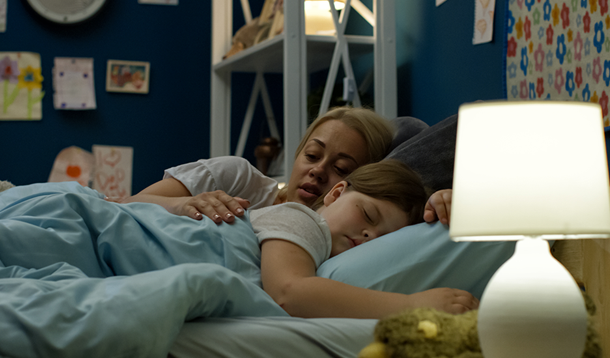
Sleepwalking is a common form of parasomnia (a category of sleep disorders that involve abnormal behaviours during sleep) affecting both children and adults. It occurs when the affected person arises out of the slow-wave sleep cycle and performs actions commonly associated with being awake, without fully regaining consciousness. While the most obvious symptom is walking around while still sleeping, there are many actions that can take place while the person is unaware of committing them.
The individual can simply sit up awake in bed, act out inappropriate behaviours like urinating in the closet, they may lash out verbally or with violence, some people eat while sleepwalking, or in extreme cases get behind the wheel of a car and drive long distances. The person’s eyes are usually open and glassy, and if spoken to they may respond slowly or not at all. The sleepwalker may have some memory of what happened, but most of the time they have no recollection at all of what they did while asleep. Sleepwalking is more common in children then adults, and can present itself in children as early as 3 years-old.
Sleepwalking occurs within an hour or two of falling asleep during the deep phase of sleep. We sleep in 90-100 minute sleep cycles, which consist of 4 stages of sleep. We complete 5 to 6 cycles of sleep per night, and sleepwalking tends to occur during the first or second sleep cycle during stage 3 of sleep, this is the transitional period between active and quiet sleep where you become less responsive to noises and activities around you.
Depending on age there are several reasons why sleepwalking occurs. Genetics play a role, and if there is a history of sleepwalking in your family there is a 10 percent chance that your child may experience episodes of sleepwalking as well. Sleepwalking can be a very normal occurrence in a child’s typically developing sleep patterns and it’s usually nothing to worry about. If your child suffers from sleep apnea or is a chronic bed wetter, there is a higher chance they could sleepwalk. The following triggers could also cause the disorder:
Typically children grow out of sleepwalking, but if you are concerned about yourself or a family member sleepwalking it’s best to talk to your doctor. Sleepwalking is a common occurrence and generally there is no cause for medical or emotional concern but it’s always best to speak to a professional for possible further tests on yourself or your child.
While there is no treatment for sleepwalking there are steps parents can take for themselves and their child. A family’s best bet to avoid sleepwalking episodes is to follow proper sleep hygiene within their home:
Most have heard that you should never wake a sleepwalker but you can if necessary. Because they are in such a deep state of sleep they’ll likely appear groggy and disoriented and may not remember anything in the morning. If waking the child or individual is necessary do so calmly and gently or just quietly lead them back to bed.
The disorder itself isn’t dangerous it’s important to make sure that the person suffering this sleep disturbance is safe.
Sleepwalking is most often a phase that is grown out of, but even if it continues into adulthood, it is manageable – often with lifestyle changes or with prescription medications. Melatonin supplements do not help with sleepwalking and can actually be a trigger for sleepwalking.